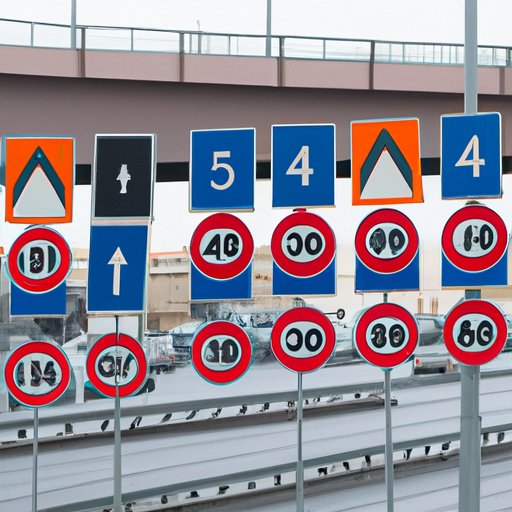Introduction
When we’re driving on the road, we are bombarded with various signs, all with a specific meaning and purpose. One type of sign is regulatory signs. These signs are designed to provide information on rules and regulations that drivers must follow on the road to ensure safety and order. In this article, we will take a closer look at regulatory signs, their importance in road safety, and how to navigate them correctly.
Understanding Regulatory Signs: A Comprehensive Guide for Drivers
Regulatory signs are traffic signs that give instructions and directions on the road. These signs are vital for ensuring that drivers know the rules of the road and obey them. They come in different shapes, sizes, and colors, with each one providing a specific message to the driver.
There are several types of regulatory signs, including stop signs, speed limit signs, no parking signs, and yield signs, to name a few. Stop signs are octagonal red signs that indicate complete cessation of a vehicle’s movement. Speed limit signs provide the maximum speed at which drivers can travel on specific roads. No parking signs are rectangular signs that indicate areas where parking is prohibited. Yield signs are triangular signs that demand drivers to give the right of way to other vehicles when merging or turning.
Visual aids can be helpful when it comes to understanding regulatory signs. Pictures can provide an accurate representation of different signs, including what they look like and what they mean. Drivers must take care to memorize and understand the various regulatory signs they encounter when driving.
The Importance of Regulatory Signs in Road Safety
Regulatory signs are essential for safe driving on the road. They ensure that everyone obeys the rules, reducing the risk of accidents and improving traffic flow. Studies show that regulatory signs have a positive impact on road safety. Many countries have seen a decline in accidents and fatalities over the years, thanks to the introduction and enforcement of regulatory signs.
Regulatory signs are particularly important in areas where there is a high volume of traffic and pedestrians. School zones, for instance, have lower speed limits and stricter traffic regulations to keep children safe. The correct use of regulatory signs in these areas can help reduce the risk of accidents and fatalities significantly.
Decoding Regulatory Signs: What Drivers Need to Know
Drivers may find some regulatory signs confusing, especially those they haven’t encountered before. Yield signs, for instance, can be mistaken for stop signs. Merge signs are also commonly misunderstood, leading to accidents when not interpreted correctly.
Understanding regulatory signs is crucial, and drivers who encounter unfamiliar signs should take the time to study and understand their meanings. Tips for interpreting confusing signs include looking for visual clues and studying the context carefully. If you are not sure what a sign means, you can seek clarification from the local authorities or other sources of information.
Navigating the Road with Regulatory Signs: Tips and Rules to Follow
When navigating the road with regulatory signs, drivers must follow specific rules to stay safe. Drivers must come to a complete stop at stop signs, give way to pedestrians and other cars at yield and merge signs, and observe the posted speed limits. Drivers should also be aware of their surroundings and adjust to unexpected situations accordingly, such as construction zones, detours, and temporary speed limits.
Always obey the instructions provided by traffic and road workers when in a construction or maintenance zone. They have a better understanding of the situation and can guide drivers on the best course of action to take.
Behind the Signs: Exploring the Purpose and Meaning of Regulatory Signs
Regulatory signs have been in use for decades, and their designs, colors, and shapes have changed over time. Each sign has a specific purpose and meaning, and drivers should understand the thought behind each sign’s design.
Regulatory signs undergo careful development and planning, with input from traffic experts, engineers, and road safety organizations, among others. Drivers can provide feedback on the effectiveness of regulatory signs by contacting their local authorities and reporting any issues they encounter on the road.
Conclusion
Regulatory signs are essential for keeping our roads safe and ensuring order and consistent traffic flow. Drivers must familiarize themselves with the different types of regulatory signs and follow the rules they provide. Doing so will help reduce accidents and fatalities and contribute to an overall safer driving experience for everyone on the road.
